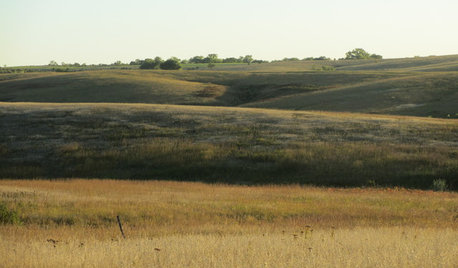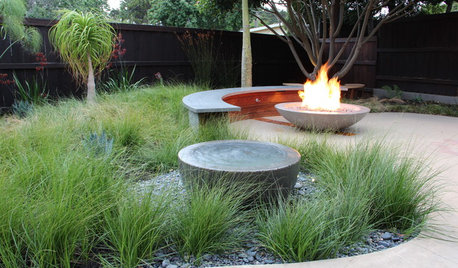fall smothering + new topsoil = spring meadow?
Georgia_Clay
20 years ago
Related Stories

FALL GARDENING5 Ways to Put Fall Leaves to Work in Your Garden
Improve your soil and yard the organic way with a valuable garden booster that grows on trees
Full Story
GARDENING GUIDESInvite Mining Bees to Your Garden by Planting Their Favorite Plants
Look for mining bees (Andrena) pollinating woodland wildflowers in U.S. gardens this spring
Full Story
GROUND COVERSGround Force: 10 Top Ground Covers for Your Garden
Protect your soil from weeds and drought this summer with a living mulch of ground covers
Full Story
GARDENING GUIDESHow to Get Your Prairie On
Have a field day with your landscape, even if you've got just a few modern containers on a paved path
Full Story
LANDSCAPE DESIGNEnergize Your Landscape With Masses of Grasses
Create year-round interest with waves of attention-getting grasses for all kinds of yards
Full Story
EDIBLE GARDENSNatural Ways to Get Rid of Weeds in Your Garden
Use these techniques to help prevent the spread of weeds and to learn about your soil
Full Story
EARTH DAY5 Ideas for a More Earth-Friendly Garden
Consider increasing the size of garden beds, filtering rainwater and using plants to reduce energy use
Full Story
FRONT YARD IDEASBefore and After: Front Lawn to Prairie Garden
How they did it: Homeowners create a plan, stick to it and keep the neighbors (and wildlife) in mind
Full Story
GARDENING GUIDESNew Ways to Think About All That Mulch in the Garden
Before you go making a mountain out of a mulch hill, learn the facts about what your plants and soil really want
Full Story
GARDENING GUIDESHow to Switch to an Organic Landscape Plan
Ditch the chemicals for a naturally beautiful lawn and garden, using living fertilizers and other nontoxic treatments
Full StorySponsored






John_Blakeman
Georgia_ClayOriginal Author
Related Professionals
Glen Ellyn Landscape Architects & Landscape Designers · White Oak Landscape Architects & Landscape Designers · Bloomington Landscape Contractors · Cary Landscape Contractors · Eureka Landscape Contractors · Harvey Landscape Contractors · Muttontown Landscape Contractors · Stony Brook Landscape Contractors · Wailuku Landscape Contractors · Oxon Hill Landscape Contractors · North Aurora Landscape Contractors · Billerica Decks, Patios & Outdoor Enclosures · Lenexa Decks, Patios & Outdoor Enclosures · Natick Decks, Patios & Outdoor Enclosures · Wheaton Decks, Patios & Outdoor Enclosuresmacfairman
froggy
macfairman
froggy
macfairman
AshaK